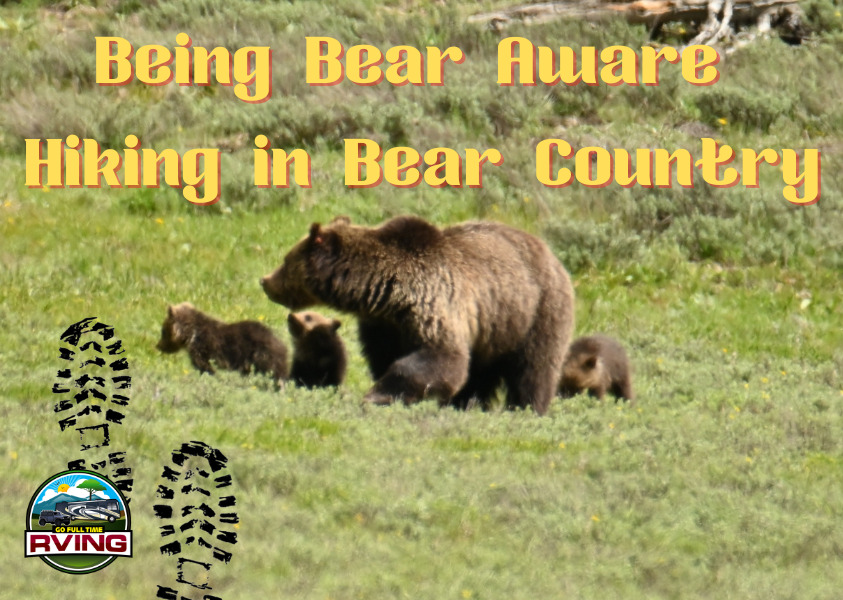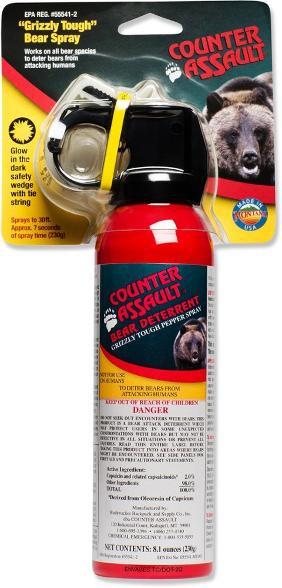Hiking in bear country is one of the most thrilling outdoor experiences available. Whether you’re exploring Yellowstone, the Rockies, or any wilderness where bears roam, the chance to see these powerful animals in their natural habitat is unforgettable. But with that adventure comes responsibility—knowing how to avoid bear encounters and what to do if one happens.
In this guide, we’ll cover essential bear safety tips for hikers, campers, and outdoor adventurers. From spotting signs of bear activity to using bear spray correctly, this is your go-to resource for staying safe on the trail.
This post contains affiliate links. As a participant in Amazon Associates and various affiliate programs, we are compensated when qualifying purchases are made through our referral links at no additional cost to you. Full Disclosure

All of Yellowstone is bear habitat—from the deepest backcountry to the boardwalks around Old Faithful. Prepare for bear encounters no matter where you go.
Even if not in Yellowstone, anytime you’re in bear country, you need to be prepared to encounter a bear.

Don’t be surprised by a bear encounter. Be ready, be alert, have a plan, and carry bear spray! Educate yourself about bear encounters.
When bears come out of hibernation, they look for easy food sources. Often, the quick meal is a carcass of an animal that has died during the winter (winter-kill), like elk and bison. Later in the Spring, young newborn elk become the meal of choice for some bears, but the young elk are only vulnerable to bears for a few weeks. By about 3-4 weeks old, elk calves can run fast enough that they are rarely caught by bears.
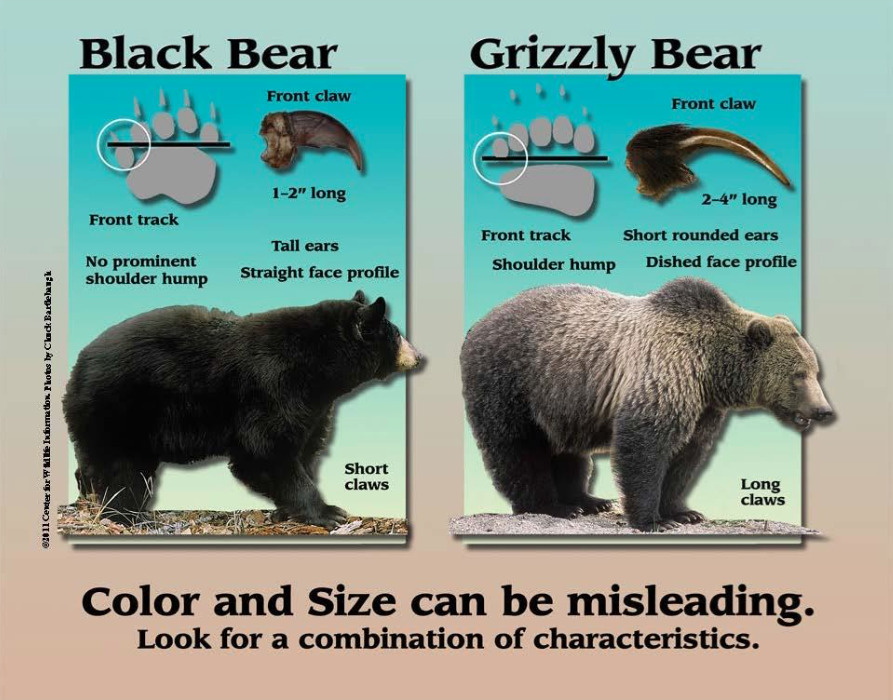
Bears remember and recognize familiar food sources like favorite berry patches, decaying logs swarming with delectable insects, and streams and rivers teeming with fish that provide much-needed fat and protein.
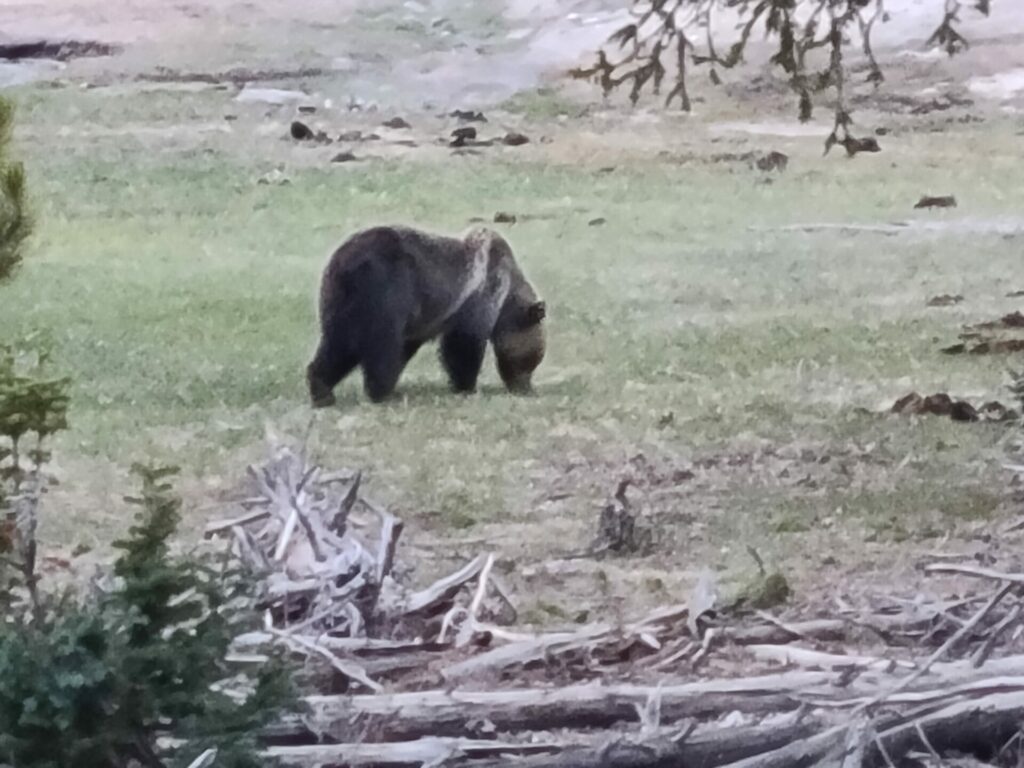
Bears are always searching for food. Bears are curious, intelligent animals that have great memories. Their eyesight is similar to humans and their sense of smell is seven times more powerful than a bloodhound’s, enabling them to smell food from miles away.
Those are the very traits that can sometimes get them – and us – into trouble. Most bears are wary of humans and try to avoid them.
However, bears can learn to associate people with food and be tenacious in their pursuit of something to eat. Even if humans are around.
Be Alert: Spot the Signs
Bears often give clues before you see them. Look for:
- Fresh tracks and scat
- Torn-up logs or rolled rocks
- Feeding sites, like ripped open ant hills
Being alert helps you see the bear before you surprise it.
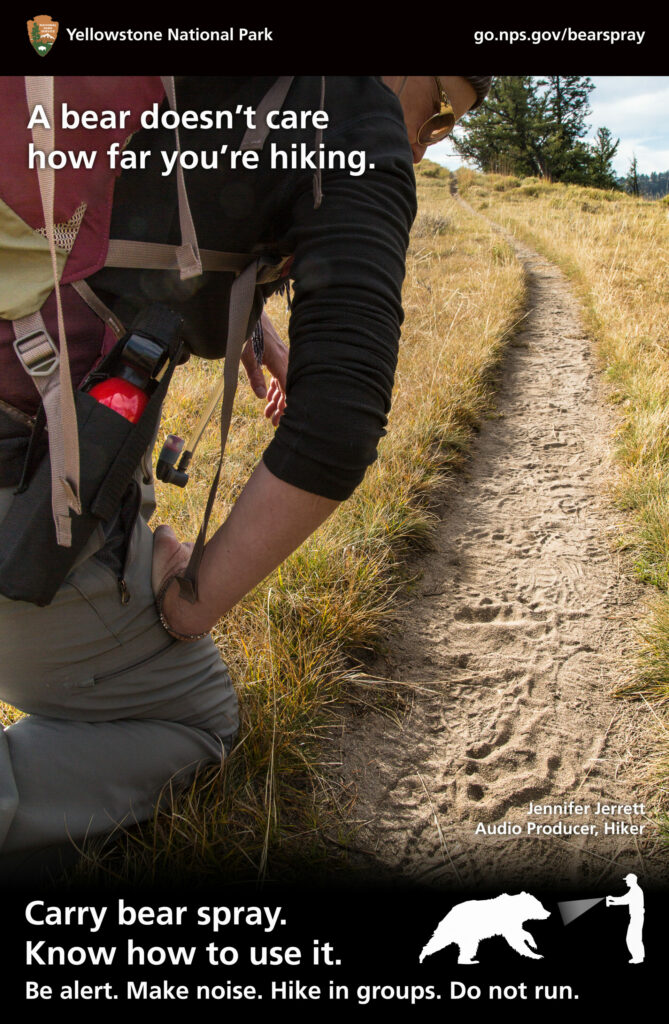
Don’t hike alone
Travel in groups of three or more people. In Yellowstone, 91% of bear-related injuries since 1970 involved people hiking alone or in pairs. Larger groups are safer.
Make Noise on the Trail
Bears usually avoid humans if they hear us coming. Keep talking, sing, or use a bear bell. Be extra noisy when:
Traveling near rivers or in windy conditions
Walking through dense brush
Hiking upwind
Avoid carcasses
Carcasses attract multiple bears, and they will defend their food. If you stumble across a fresh kill:
Report it to a ranger station or visitor center
Leave immediately the way you came
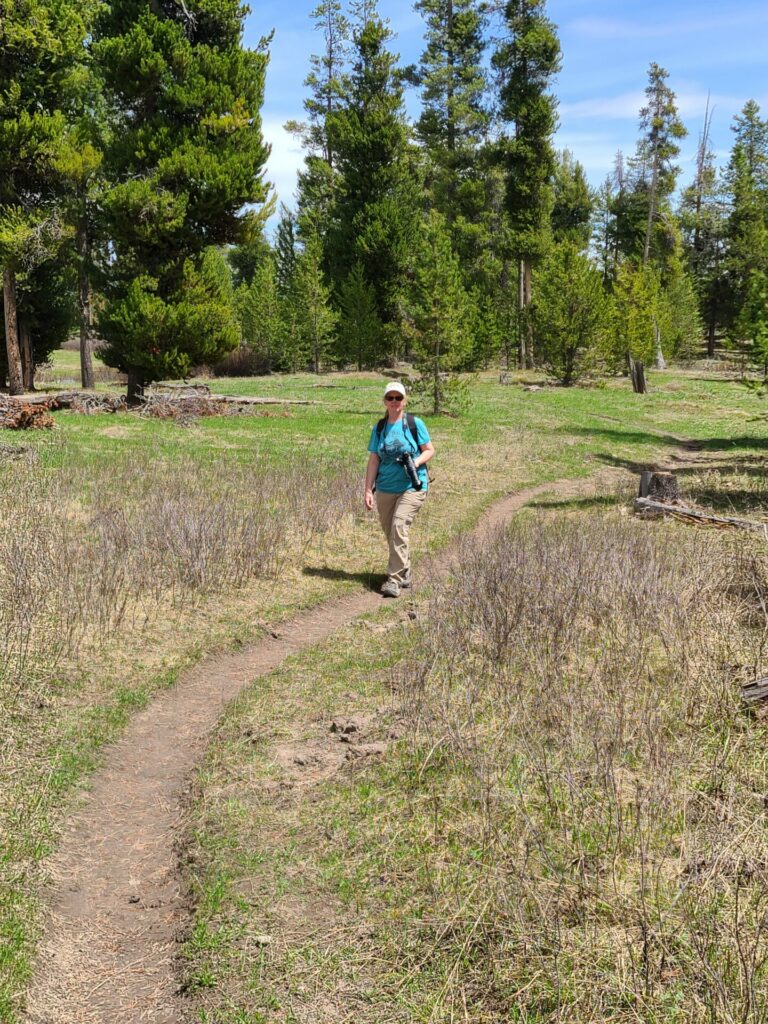
Protect Your Gear and Food
Never leave food or packs unattended. Even a single reward teaches a bear to seek out human food. Bears that become food-conditioned often become aggressive—and sadly, may need to be removed or euthanized.
Handling Surprise Encounters
If you meet a bear:
- Watch for warning signs: teeth clacking, huffing, paw slaps
- Back away slowly—don’t run or make sudden movements
- Draw your bear spray and be ready
Remember: you can’t outrun a bear.
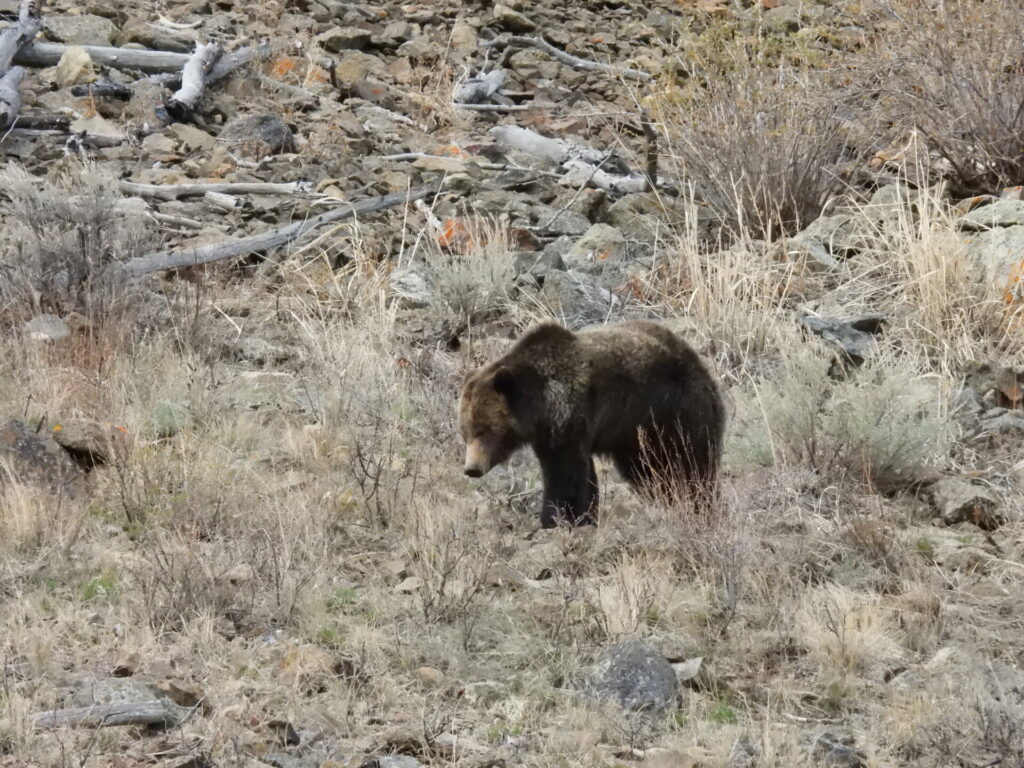
Slowly putting distance between yourself and the bear may defuse the situation. Draw your bear spray from the holster, remove the safety tab, and prepare to use it if the bear charges.
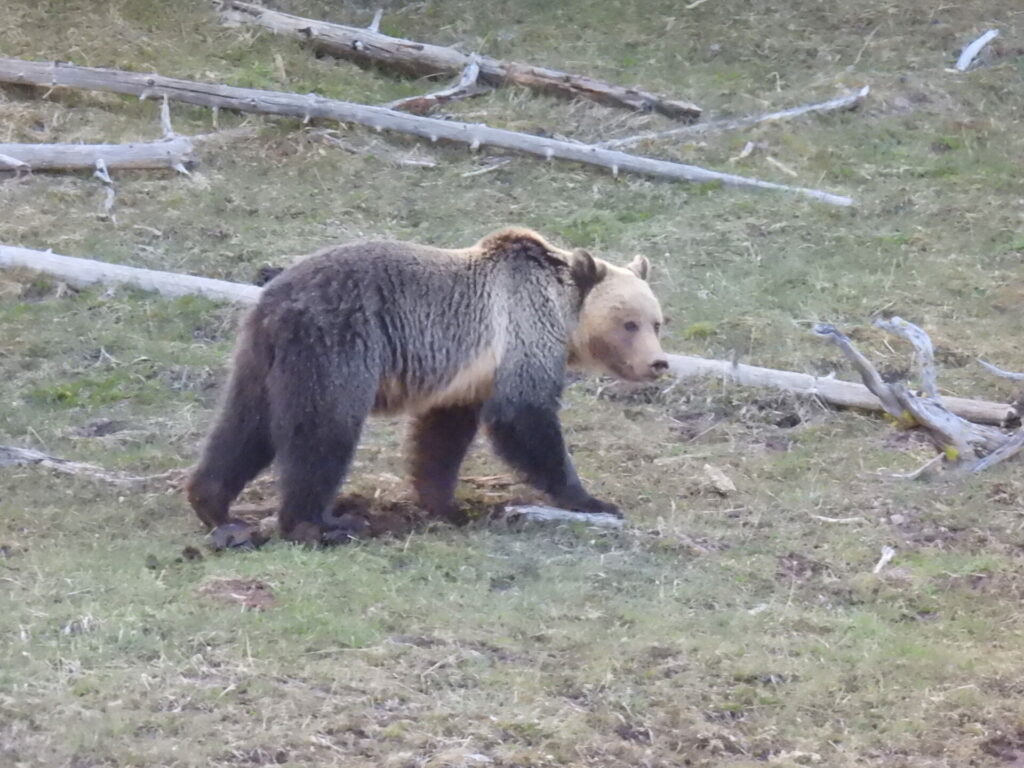
In most cases, climbing a tree is a poor decision. Bears can climb trees (especially if there is something up the tree that the bear wants). Running to a tree or frantically climbing a tree may provoke a bear to chase you. People have been pulled from trees before they can get high enough to get away. Also, when was the last time you climbed a tree? It’s probably harder than you remember.
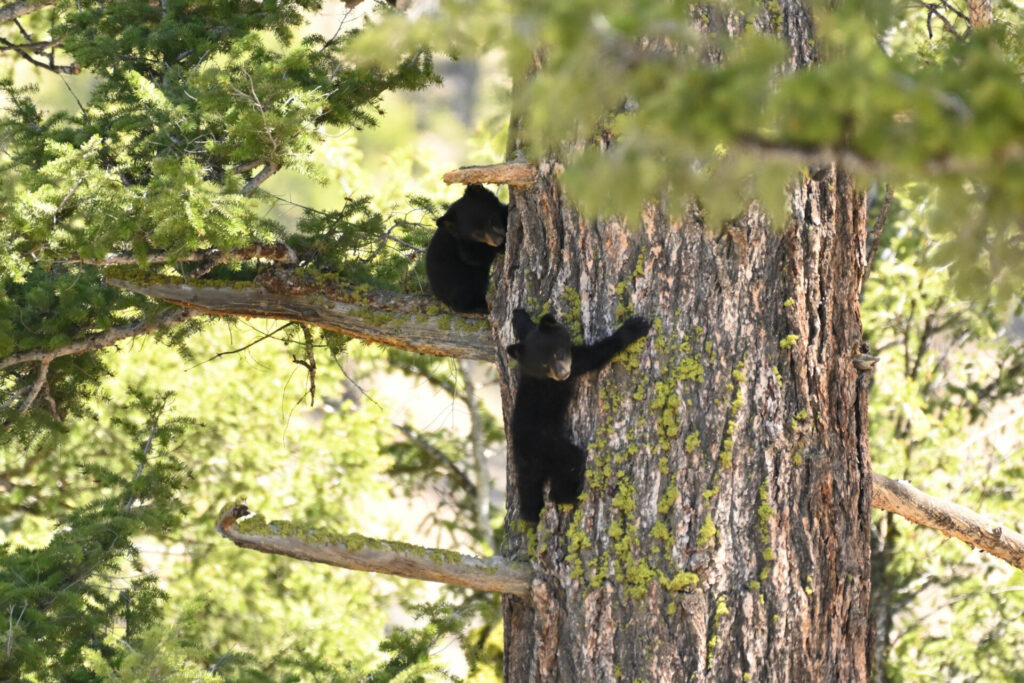
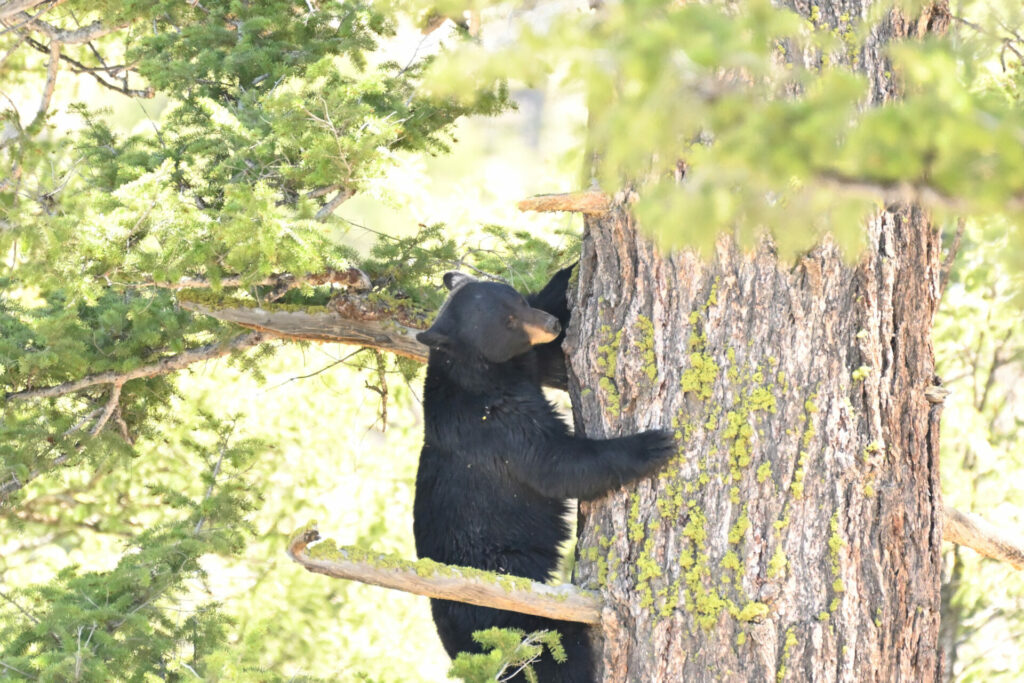
Bear Spray: A Must-Have
Bear spray is proven to be highly successful at stopping aggressive behavior in bears. Take an active role in protecting yourself and the bears people come to Yellowstone to see: carry bear spray and learn how to use it!
Bear spray is a non-lethal deterrent designed to stop aggressive behavior in bears. Its use can reduce human injuries caused by bears and the number of bears killed by people in self-defense. Bear spray uses a fine cloud of Capsicum derivatives to temporarily reduce a bear’s ability to breathe, see, and smell, giving you time to leave the area.
Tips for Use
- Keep bear spray readily accessible in a quick draw holster, not stored in your pack.
- You don’t have to be a good shot with bear spray. Just put up a cloud of spray between you and the charging bear.
- Practice! Use an inert can of bear spray to practice removing it from your holster, removing the safety tab with your thumb, and firing. Practice firing inert bear spray with the wind at your back, into a headwind, and with a crosswind so that you understand how bear spray is affected by the wind.
- Do not use bear spray like insect repellent. It does not work as a deterrent when applied to people or equipment.
- No bear deterrent is 100% effective: learn how to reduce your risk while hiking in bear country.
- Make sure your bear spray is EPA-approved: don’t depend on personal defense products to stop a charging bear.
- Bear spray can explode if it reaches 120 degrees Fahrenheit. Don’t store it in the passenger compartment of vehicles or near any heat sources.
- Make sure your bear spray hasn’t expired.
If a Bear Charges You
- Remove the safety clip
- Aim slightly down and adjust for crosswind
- Begin spraying when the charging bear is 30-60 feet (10-20 yards) away
- Spray at the charging bear so that the bear must pass through a cloud of spray
- Keep spraying until the bear changes direction
- If the bear continues to charge, spray into its face
- Leave the area promptly
Bear spray is sold at gift shops, outdoor stores, service stations, and bookstores inside the park, as well as in local communities. Always select an EPA-approved product that is specifically designed to stop bears. Personal defense, jogger defense, law enforcement or military defense sprays may not contain the correct ingredients or have the proper delivery system, to stop a charging bear.
Conclusion
Having the opportunity to explore bear country is a wonderful thing. It’s a great experience to watch bears do bear things in their natural habitat. But be bear-aware and know what to do in case you happen to get too close to a bear in the wild.
Have you used this product or found something even better?
We’re always testing new gear to make RV life easier, safer, and more fun.
Thanks for reading our review!
If you have questions, experiences, or thoughts to share, drop them in the comments below—we’d love to hear from you.
If you’re looking to build your own home-based business like we have with this webpage, check out Wealthy Affiliate.
Wealthy Affiliate is an all-in-one platform that you can build your whole affiliate marketing business on. It combines training, software, and website hosting into one. This makes the whole process of starting an online business from scratch much easier, especially if you’re new to building a website.


